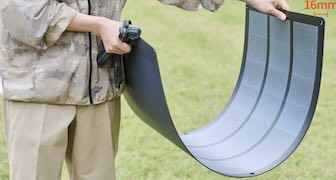OSAKA, May 19 (News On Japan) - Visitors to the Osaka-Kansai Expo may be surprised to learn that one of the most popular attractions—moon and Mars rocks—can be seen and touched without waiting in long lines, thanks to a lesser-known exhibit at the far western end of the venue.
Now in its second month, the Expo continues to attract crowds with its iconic Grand Roof Ring and numerous pavilions. Among them, the U.S. Pavilion draws particularly long queues, with wait times often exceeding 90 minutes even on weekdays. The main draw is the lunar rock on display.
"I saw the moon rock at the last Expo, so I wanted to see it again," said one visitor waiting in line.
At the Japan Pavilion, which requires reservations that are often hard to secure, many are eager to catch a glimpse of the Martian rock.
"I had to fight with my smartphone first thing in the morning to secure a reservation," one visitor said. "I just saw the moon rock, so now I’m here to see the Mars one."
These exhibits are so popular that some visitors are going from one to the other. However, there is a quiet alternative: both the moon and Mars rocks can be found in a single spot—without the crowds.
Located about a 10-minute walk from the western area of the Expo site and past the West Gate entrance, the Future Life Village offers a hidden exhibition that includes around 50 types of meteorites. Its centerpiece is the chance to see—and touch—actual moon and Mars rocks.
"I was surprised. You can touch them and compare the differences, which is really interesting," said a repeat visitor. "Isn't it amazing you don’t have to wait in line? This is actually my second time here."
Even more unexpectedly, visitors are allowed to strike some of the rare meteorites with a hammer.
"It feels strange, like hitting metal," one person commented. "It’s incredible. I was shocked to find something this special tucked away in a corner. And there’s no line."
The exhibition is scheduled to run until the end of July.
Source: MBS















